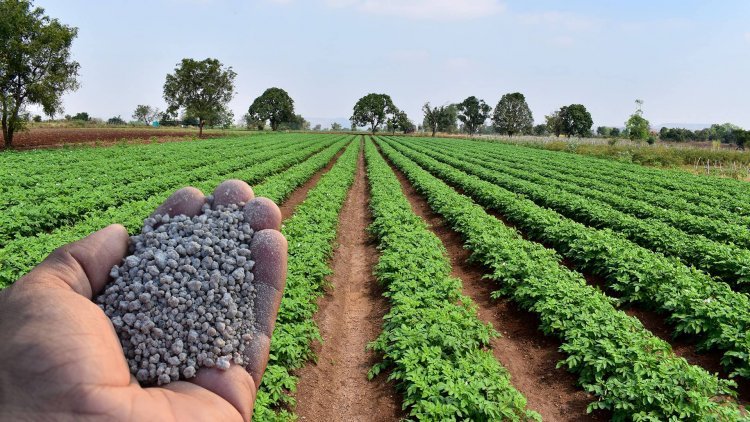- Courses
- GS Full Course 1 Year
- GS Full Course 2 Year
- GS Full Course 3 Year
- GS Full Course Till Selection
- Answer Alpha: Mains 2025 Mentorship
- MEP (Mains Enrichment Programme) Data, Facts
- Essay Target – 150+ Marks
- Online Program
- GS Recorded Course
- Polity
- Geography
- Economy
- Ancient, Medieval and Art & Culture AMAC
- Modern India, Post Independence & World History
- Environment
- Governance
- Science & Technology
- International Relations and Internal Security
- Disaster Management
- Ethics
- NCERT Current Affairs
- Indian Society and Social Issue
- NCERT- Science and Technology
- NCERT - Geography
- NCERT - Ancient History
- NCERT- World History
- NCERT Modern History
- CSAT
- 5 LAYERED ARJUNA Mentorship
- Public Administration Optional
- ABOUT US
- OUR TOPPERS
- TEST SERIES
- FREE STUDY MATERIAL
- VIDEOS
- CONTACT US
Cooperatives and Their Evolution in India
Cooperatives and Their Evolution in India
- In July 2024, the Union Home Minister and Minister of Cooperation addressed the 'Sahkar se Samriddhi' (Prosperity through Cooperation) event, held in Gujarat to mark the 102nd International Day of Cooperatives.
About Cooperatives
- Cooperatives are member-owned, people-centered enterprises that operate to fulfil the economic, social, and cultural needs and aspirations of their members.
- India has one of the largest cooperative networks globally, with over 800,000 cooperatives spanning various sectors such as agriculture, credit, dairy, housing, and fisheries.
- The cooperative sector significantly contributes to the Indian economy, accounting for –
- 20% of agricultural loans,
- 35% of fertilizer distribution,
- 31% of sugar production,
- 13% of wheat procurement, and
- 20% of paddy procurement.
|
Cooperatives in the Pre-Independence Era
- First Cooperative Act in India: The Indian Famine Commission (1901) led to the enactment of the Cooperative Credit Societies Act in 1904, followed by the Cooperative Societies Act, 1912.
- Maclagan Committee: In 1915, Sir Edward Maclagan chaired a committee to assess whether the cooperative movement was progressing on a sound economic and financial basis.
- Montague-Chelmsford Reforms: The Montague-Chelmsford Reforms of 1919 designated cooperation as a provincial subject, further driving the cooperative movement.
- Post Economic Depression, 1929: Committees in Madras, Bombay, Travancore, Mysore, Gwalior, and Punjab were established to explore possibilities for restructuring cooperative societies.
- Gandhian Socialist Philosophy: Mahatma Gandhi believed that cooperation was essential for building a socialistic society and achieving complete decentralization of power.
- He viewed cooperation as a key mechanism for empowering people.
- In South Africa, Gandhi established the 'Phoenix Settlement' as a cooperative based on a socialistic model.
- He also founded the Tolstoy Farm as a cooperative rehabilitation settlement for families impacted by the South African freedom struggle.
Cooperatives in Post-Independence India
- First Five-Year Plan (1951-56): Emphasized the role of cooperatives in promoting comprehensive community development.
- Multi-State Co-operative Societies Act, 2002: Established guidelines for the creation and functioning of multi-state cooperatives.
- 97th Constitutional Amendment Act of 2011: Made the right to form cooperative societies a fundamental right under Article 19.
- Introduced a new Directive Principle of State Policy concerning cooperative societies under Article 43-B.
- Added Part IX-B to the Constitution, titled "The Co-operative Societies" (Articles 243-ZH to 243-ZT).
- Empowered Parliament to legislate on multi-state cooperative societies (MSCS) and authorized state legislatures to regulate other cooperative societies.
- Establishment of Union Ministry of Cooperation (2021): Took over responsibilities related to cooperative affairs, which were previously managed by the Ministry of Agriculture.
- Multi-State Co-operative Societies (Amendment) Act, 2022: Introduced the Co-operative Election Authority, which is responsible for overseeing board elections in multi-state cooperative societies.
Impact of Cooperatives
- Empowering Marginalized Communities: The Amul Dairy Cooperative in Gujarat involves more than 3.6 million milk producers. Many of these producers are from small and marginal farms.
- The cooperative enhances rural communities by offering fair prices for milk. It also promotes economic independence, especially for women.
- Boosting Agricultural Productivity and Marketing: Indian Farmers Fertiliser Cooperative Limited (IFFCO) is the world's largest fertilizer producer.
- It supports farmers by providing essential agricultural inputs such as fertilizers, seeds, and credit. These inputs are offered at competitive prices, which leads to higher productivity and increased farm incomes.
- Facilitating Access to Essential Services: Kerala State Milk Marketing Federation (Milma) is a dairy cooperative.
- It procures milk from farmers and supplies it to consumers in Kerala at affordable prices. This ensures market access for producers and provides essential dairy products to the population.
- Promoting Inclusive Growth and Job Creation: According to a NITI Aayog report, sugar cooperatives in Maharashtra employ over 500,000 people.
- This employment includes both direct and indirect jobs. The cooperatives make a significant contribution to rural job creation and income generation.
Government Measures to Strengthen Cooperatives
-
Umbrella Organization for Urban Co-operative Banks (UCBs)
- The Reserve Bank of India (RBI) has granted approval to the National Federation of Urban Co-operative Banks and Credit Societies Ltd. (NAFCUB) to establish an Umbrella Organization (UO) for the UCB sector.
- This organization will provide essential IT infrastructure and operational support to around 1,500 UCBs.
-
Promoting Transparency and Sustainability
- Model Bye-Laws have been introduced for Primary Agricultural Credit Societies (PACS), transforming them into multipurpose, multidimensional, and transparent entities.
- The government has launched the world’s largest decentralized grain storage plan in the cooperative sector in 2023.
- The aim is to establish a PACS in every panchayat by 2029, aligning with Prime Minister Modi's vision of 'Sahkar se Samriddhi' (Prosperity through Cooperation).
-
Other Initiatives
- A National Cooperative Database has been set up to serve as an authentic and updated data repository.
- The National Cooperative Development Corporation (NCDC) has issued bonds worth Rs 2000 crore to support cooperative welfare.
- Cooperatives have been included as ‘buyers’ on the Government e-Marketplace (GeM) portal.
- The NCDC's scope has been expanded to enhance its range and depth.
- The National Cooperative Organic Limited (NCOL) has been established to promote organic farming and ensure fair pricing.
- Bharat Organic Atta has been launched to support organic agriculture.
Challenges faced by the cooperatives in India and their Solutions
|
Challenges faced by Cooperatives |
Solutions |
|
Governance Challenges: Cooperatives often struggle with transparency, accountability, and democratic decision-making processes. |
Enhance Governance Practices: Implement digital platforms for financial reporting, conduct regular audits, and promote active member participation in decision-making processes. |
|
Limited Access to Financial Resources: Many cooperatives, especially those serving marginalized communities, face difficulties in accessing financial resources. They often lack the necessary collateral or formal documentation. |
Improve Access to Financial Resources: Establish cooperative development funds with flexible collateral requirements; explore alternative financing options such as crowdfunding and social impact bonds. |
|
Socio-economic Disparities and Exclusion: Cooperatives frequently encounter challenges related to inclusivity and structural inequalities, which can lead to the exclusion of certain groups and hamper the cooperative’s mission of equitable participation. |
Promote Inclusivity: Develop outreach programs to educate and attract members from marginalized communities, addressing their specific needs and challenges. |
|
Infrastructural Constraints: Infrastructural limitations and poor connectivity can affect the efficiency and effectiveness of cooperatives, restricting their ability to reach broader audiences and markets. |
Strengthen Infrastructure: Advocate for government investment in rural infrastructure to improve connectivity and market access for cooperatives. |
|
Lack of Technical and Managerial Capacities: Absence of training and skill development programs is another significant challenge, leading to outdated knowledge and practices among members and managers.
|
Build Capacity: Collaborate with government agencies and training institutions to provide skill-building workshops for cooperative members and managers. |
|
Social and Cultural Factors: A lack of awareness about the cooperative model and its benefits among potential members limits participation. Social hierarchies and caste-based divisions can create barriers to equitable participation and representation within cooperatives. |
Raise Awareness: Launch targeted awareness campaigns in local languages to inform potential members about the benefits and principles of cooperatives. |




